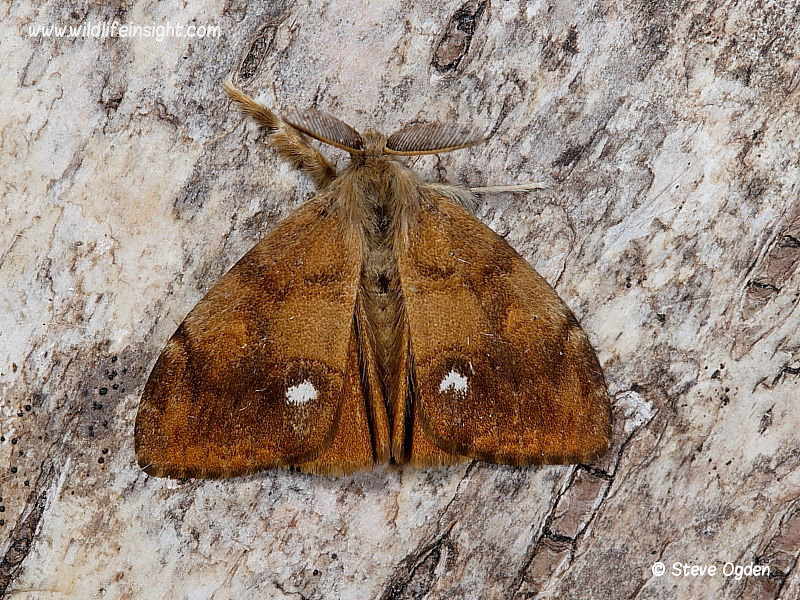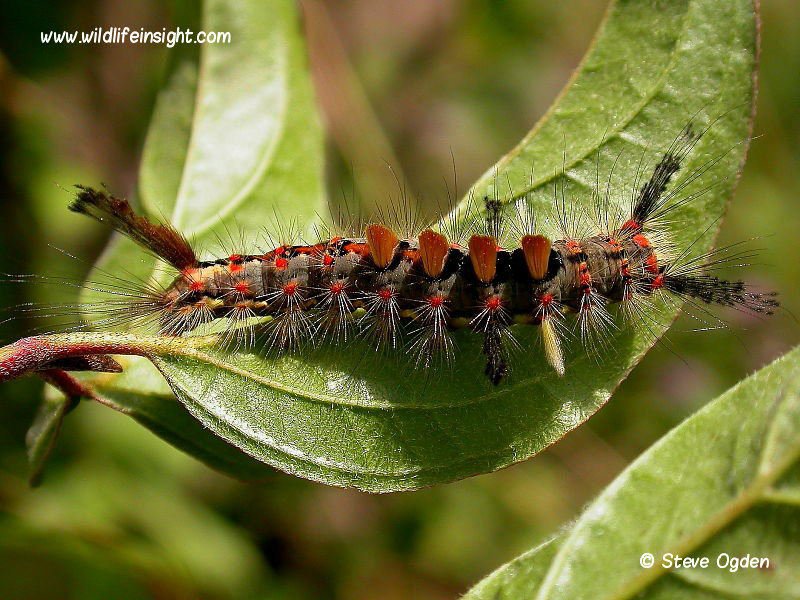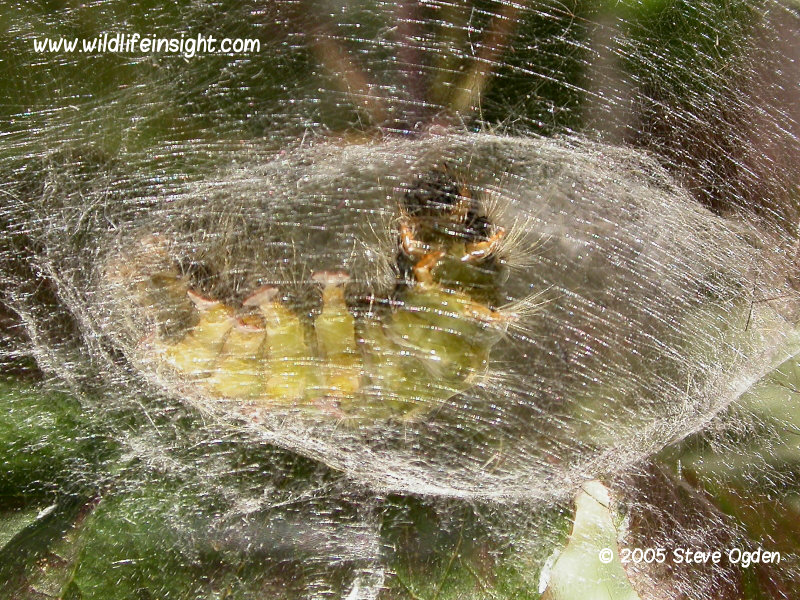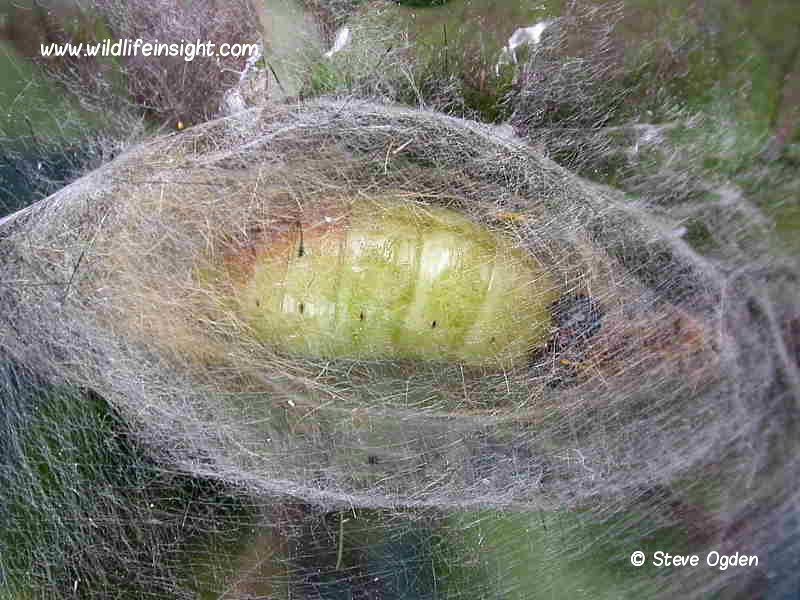The Vapourer caterpillar and moth (Orgyia antigua)
The Vapourer moth is a common species with a fascinating life cycle.
It’s found in a wide range of habitats including open woodlands, moorland, valleys and urban gardens throughout most of the British Isles ranging from northern Scotland to the extreme south west of Cornwall.
The species is also found throughout much of Europe and in North America, where it’s known as the Rusty Tussock Moth.
In the British Isles it flies mostly in a protracted single generation between May and October.
However, the long flight period and variable peaks and troughs in numbers have led to some debate over whether a partial second generation may occur. Indeed, with warming summers in the southern half of England second broods may well be occurring and on the increase.
The males are attracted to light in small numbers but are most frequently seen flying in afternoon sunshine, particularly later in the year during September and October.
For most people the Vapourer moth is best known for its spectacular caterpillars which are commonly found feeding on a wide variety of plants, shrubs and trees in gardens and the countryside.
Sightings of different coloured larval forms are featured below including a yellow form that appears to be predominantly found on moorlands and heathlands of south west Cornwall.
The Male Vapourer Moth

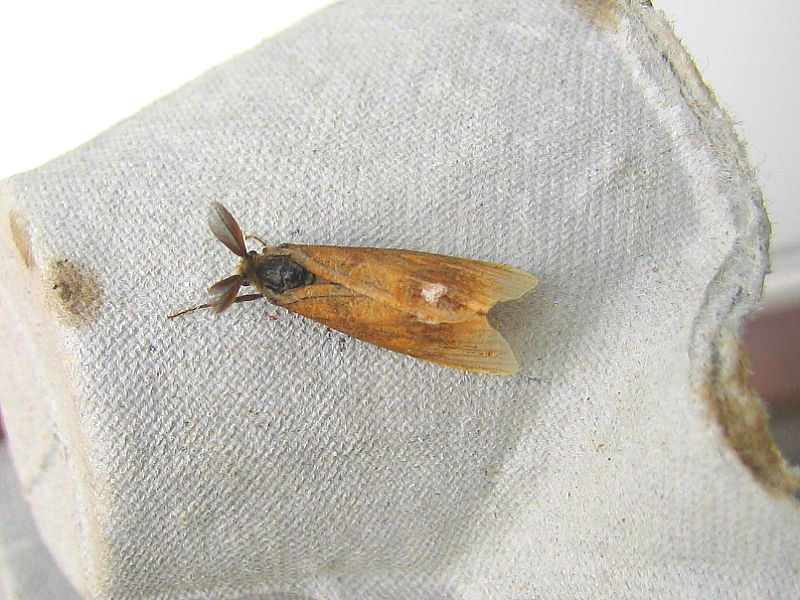
The male Vapourer has forewings of between 25-30mm that give the moth a rich orange brown when seen flying in sunshine.
It has a weak, fluttering flight that can be mistaken for a small butterfly.
Despite being diurnal the males are recorded sufficiently often at light traps to suggest they are also partially active at night.
Overall the male Vapourer moth is a dull chestnut brown with a white spot towards the outer edge of the forewing. At rest it may either take on a flat triangular posture or fold its wings into a tighter scroll.
The males pectinate antennae are used to detect pheromones given off by the females.
Female Vapourer

The female Vapourer Moth is flightless.
Having no size or weight limitations associated with flight her large, rounded abdomen can contain hundreds of eggs.
Life Cycle of the Vapourer Moth
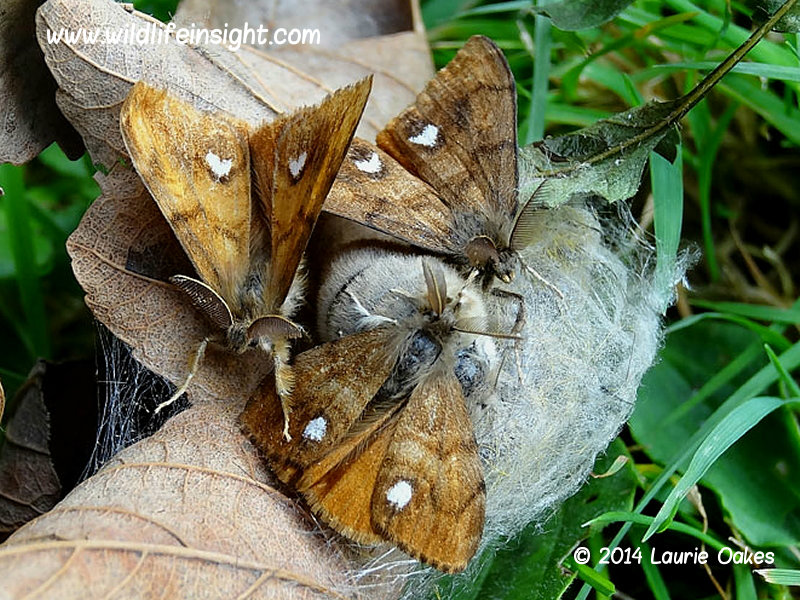
In southern regions there is mainly a protracted flight period from July to October but in good summers there may be a further, later generation.
In cooler northern regions there is a single generation with a shorter flight period from September to October.
The emerging, flightless female remains on her cocoon and attracts males by giving off pheromones.
Over the next few days she lays a large batch of eggs on the side of her cocoon and adjoining leaves.
Foodplants of the Vapourer Moth caterpillar
The caterpillars feed on a wide range of deciduous trees such as blackthorn, hawthorn, apple and oak as well as various garden plants including rose and blueberry bushes.
Some of the earliest records are in early May of newly hatched caterpillars feeding on Wisteria on the walls of houses.
The eggs normally over winter before starting to hatch in May.
Unusually for most moth species, eggs from a single batch do not all hatch within a few days, instead periodic hatching may occur over several weeks.
In good summers in the south of England second generations can occur. Rebecca Burns found a brood of small, 8-10mm larvae on a Walnut tree in her North Somerset garden at the beginning of June 2018.
Wishing to see the life cycle she reared one on inside. Development was rapid and once fully grown it soon pupated. A female emerged from the pupa at the beginning of July.
When placed outside on the walnut tree the female immediately attracted males and shortly after laid a batch of eggs.
The laid eggs remained on the tree for several days before Rebecca brought them inside out of the hot sun. Instead of the eggs overwintering they began hatching on the 11th July to produce a second generation.
Whilst inside the larvae and eggs had not been subjected to temperatures greater than those experienced outside during this warm summer.
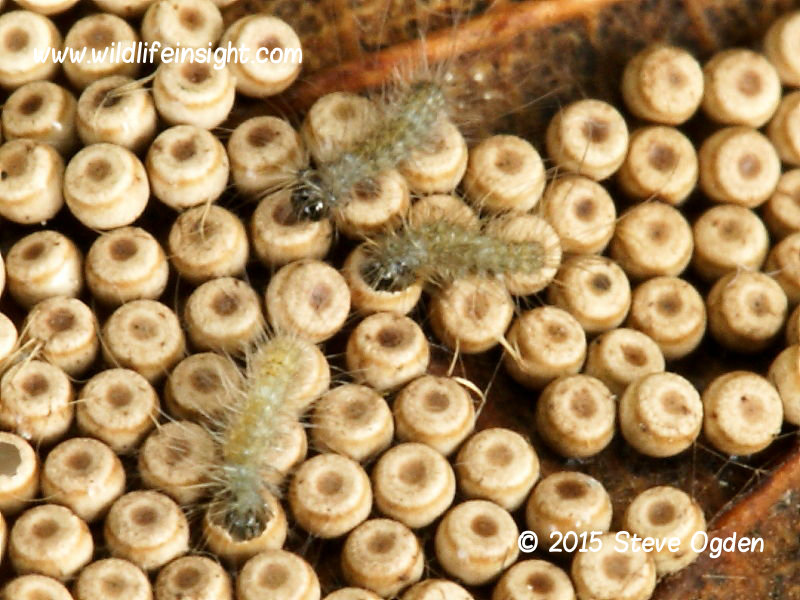
The various development stages featured are of batches of the yellow form of Vapourer caterpillars found in south west Cornwall. The various instars of the more common forms found in other parts of the UK are similar but generally darker with stronger red and black markings.

Hatched caterpillars feed on their eggshells before seeking out the leaves of nearby food plants.
When small the caterpillars may also be dispersed by the wind on silk threads.
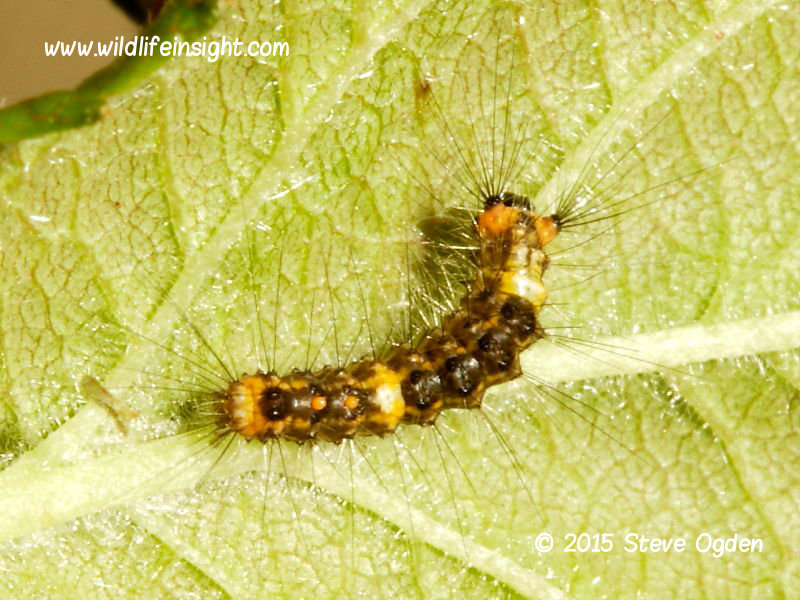
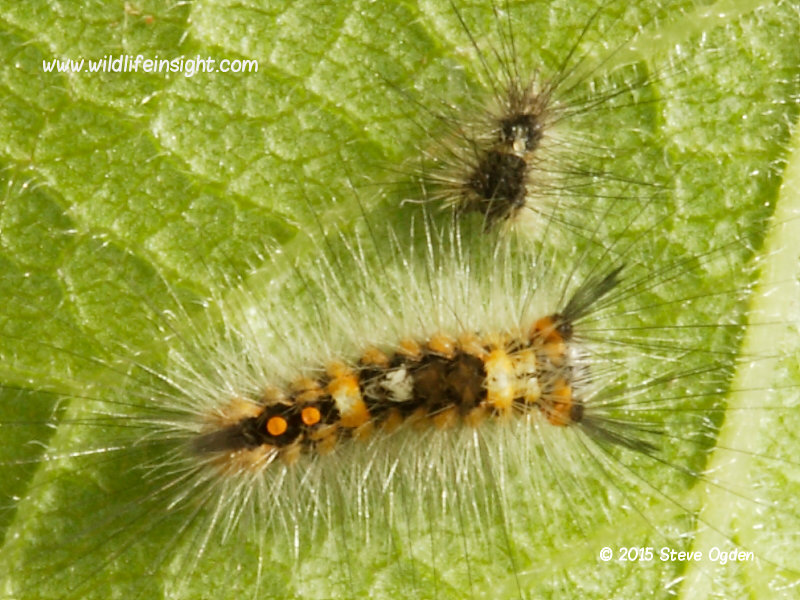
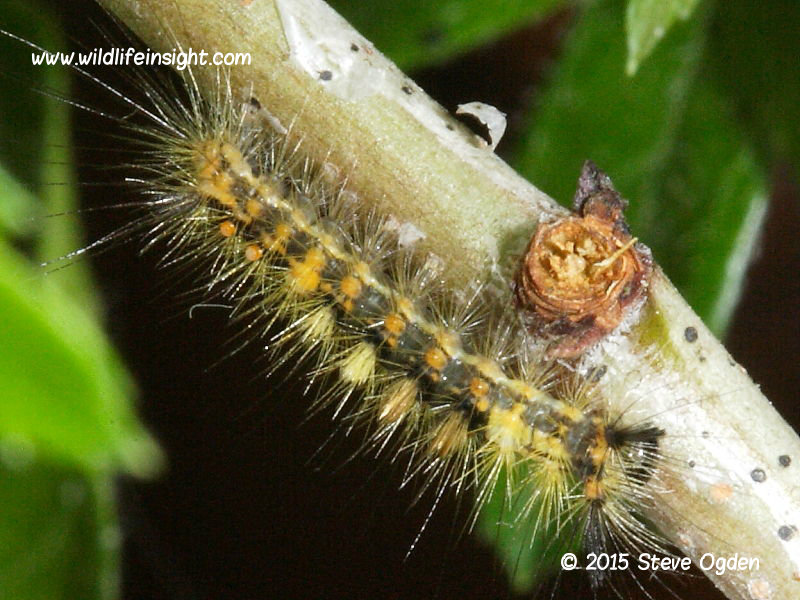
In captivity, as part of a Cornish rearing project, the first caterpillars were fully grown and pupated within 37-44 days.
Pupating Vapourer caterpillar
Pupation takes place inside a cocoon spun to either the food plant or on other stable structures such as tree trunks, walls of buildings or fence posts.
Adult moths emerge within 8-15 days.
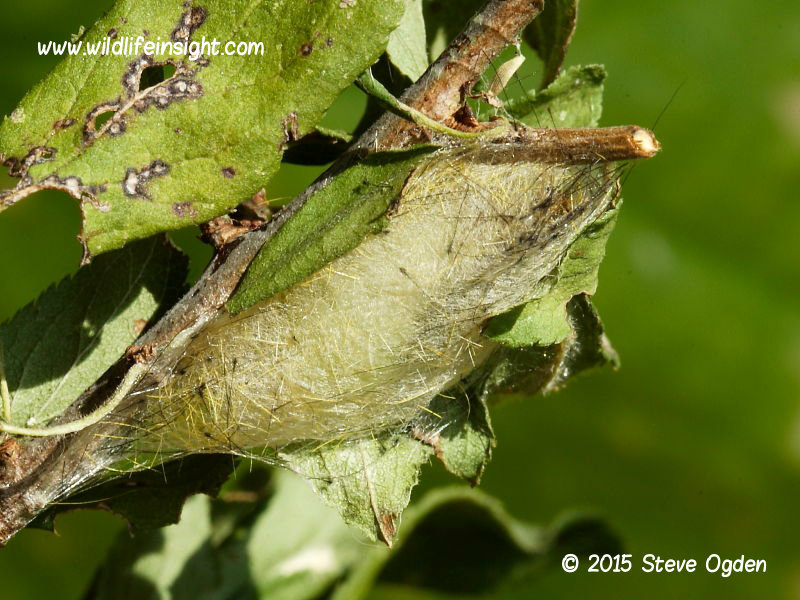
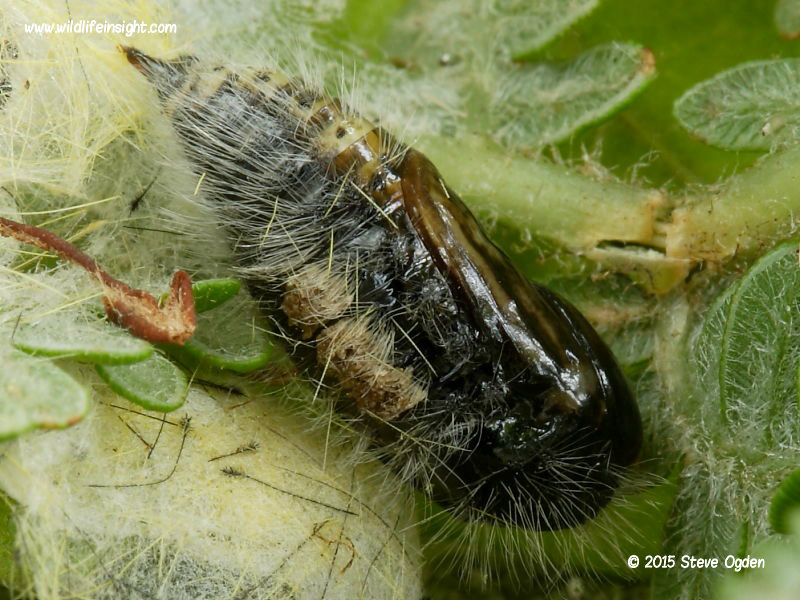
Other caterpillars can be seen in the Moth caterpillar galleries and Butterfly caterpillar galleries.
The Vapourer Moth caterpillar
The spectacularly colourful, fully grown Vapourer Moth caterpillar is one of the most instantly recognisable caterpillars in the British Isles.
It’s also one of the most commonly sighted caterpillars in gardens where it can sometimes become so numerous to be considered a pest.
The caterpillar reaches 40 mm in length, has two ‘horn-like’ projections of black hair from the first segment and a further black ‘tail like’ projection from the rear, eleventh segment.
One of its most distinctive features are the four dorsal hair tufts, or tussocks, on the fourth to seventh segment which can be either white, brown or yellow.
Two black and white, subspiracula, hairpencil projections, aligned below the first dorsal tuft, are diagnostic features
The ground colour is grey/dark blue with red pinacula from which sprout clusters of light/grey hair.
The Cornish Yellow form of Vapourer Moth caterpillar

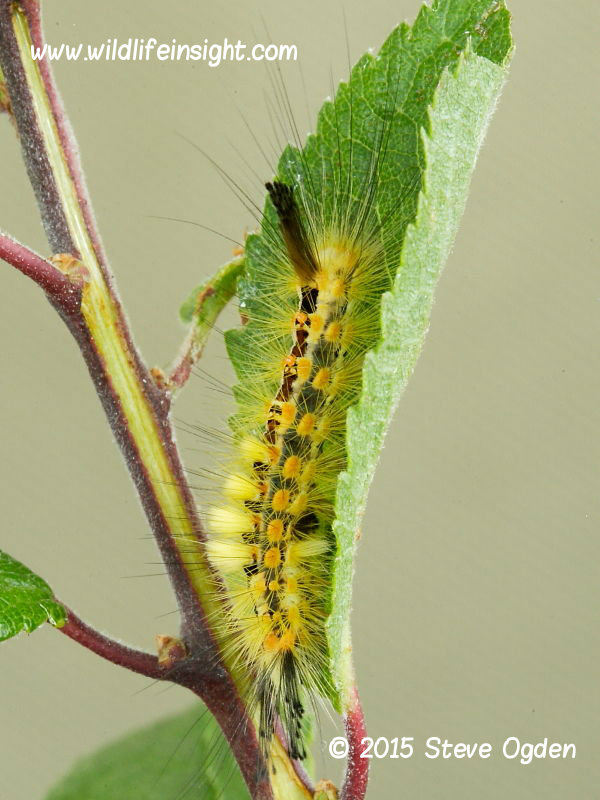
In Cornwall records suggests there may only be a single ‘yellow’ coloured form of Vapourer moth caterpillar and one that is rarely found in the rest of the British Isles. These caterpillars are predominately recorded in September while wandering to pupate on moorland, heathland and in south westerly coastal valleys.
Records also indicate the Vapourer moths flight period in these areas of Cornwall to be mainly in September and October, much shorter and later than in other southern parts of the British Isles. This more closely matches the later flight time of this species in cooler northern regions of its range.

Also, unlike in other regions, there seems little colour variation of caterpillars – the mid dorsal tufts being a pale yellow, the pinacula orangy yellow from which sprout pale yellow hairs and a yellow instead of white, subspiracula hairpencil extension.
The offspring reared from the eggs laid by two Cornish females and fertilised by males attracted in these moorland areas were 100 percent the yellow form without any variation in colour. Even those reared on variable foodplants such as hawthorn and blackthorn showed no colour variation.
More information on the Cornish Vapourer will be added soon.
More Cornish Vapourer moth caterpillar sightings
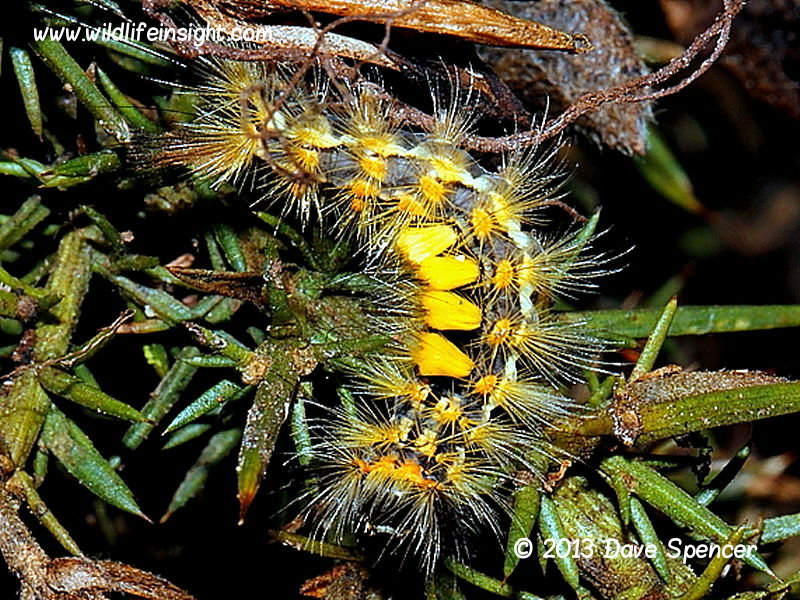
There do not appear to be any records of the more normal coloured forms found in other areas of the British Isles from the Cornish heathlands, moorlands and valleys.
On heath and moorland ling and heathers may be the primary larval foodplants. However, this has yet to be confirmed.

Bill Deakins recorded the yellow form of Vapourer Moth caterpillar featured on Dartmoor, Devon in September.
Interestingly, not only was it similar to those found in the neighbouring county of Cornwall but it was also recorded in similar moorland habitat and at the same time of year, September, as those in Cornwall.
This particularly striking Vapourer Moth larva was recorded by Kate Dalziel in West Penwith, Cornwall.
Its bold rusty/orange markings on the lower half of the dorsum are unusual for this Cornish ‘yellow’ form.
The larva was seen on a stony path bordered by heather in typical coastal moorland surrounding the old, disused Botallack mine on the North coast of South West Cornwall.
Rearing the Vapourer Moth
The caterpillars are very easy to rear and can be collected by sweeping. Late instar caterpillars found wandering prior to pupating are often parasitised.
Finding the eggs can be a laborious exercise and the simplest way to see the whole life cycle is to collect caterpillars and rear them through hoping a female will emerge.
She can then be taken outside on a sunny afternoon into an area known to have a population of Vapourer Moths to attract a male. Once mated she will readily lay eggs.
Overwintering eggs should be kept in a cool outhouse to experience outside winter temperatures. In unusually mild winters eggs may be placed in a fridge for a few weeks.
Occasional fine spray of water prevents drying out.
Pest Status of Vapourer Moth caterpillars
In the majority of cases the Vapourer moth causes little damage to shrubs and trees other than slight defoliation. However, in some urban areas and in gardens they can occasionally become so numerous they become a pest, causing severe defoliation of shrubs and specimen trees – although, most trees will fully recover the following year.
Recommended reference books
- The Colour Identification Guide to Caterpillars of the British Isles – Jim Porter.
- Field Guide to the Moths of Great Britain and Ireland – Waring, Townsend and Lewington.
- Moths of the British Isles – Bernard Skinnner.
- The Provisional Atlas of UK’s Larger Moths – Randle, Fox and Parsons
